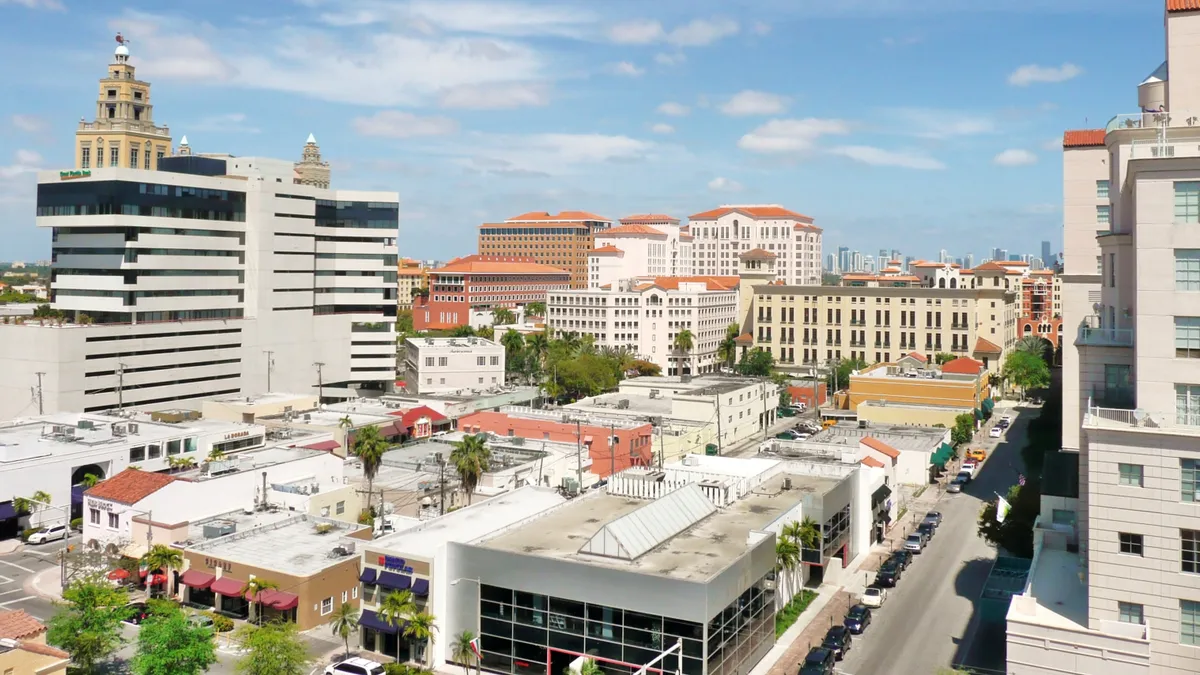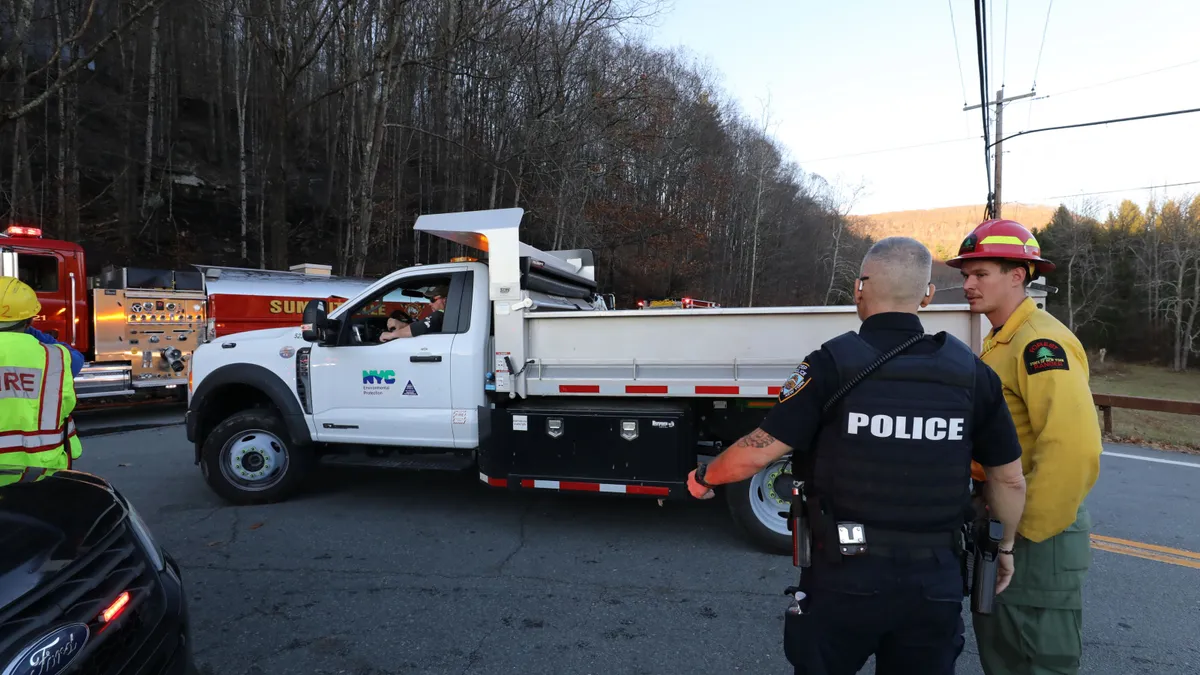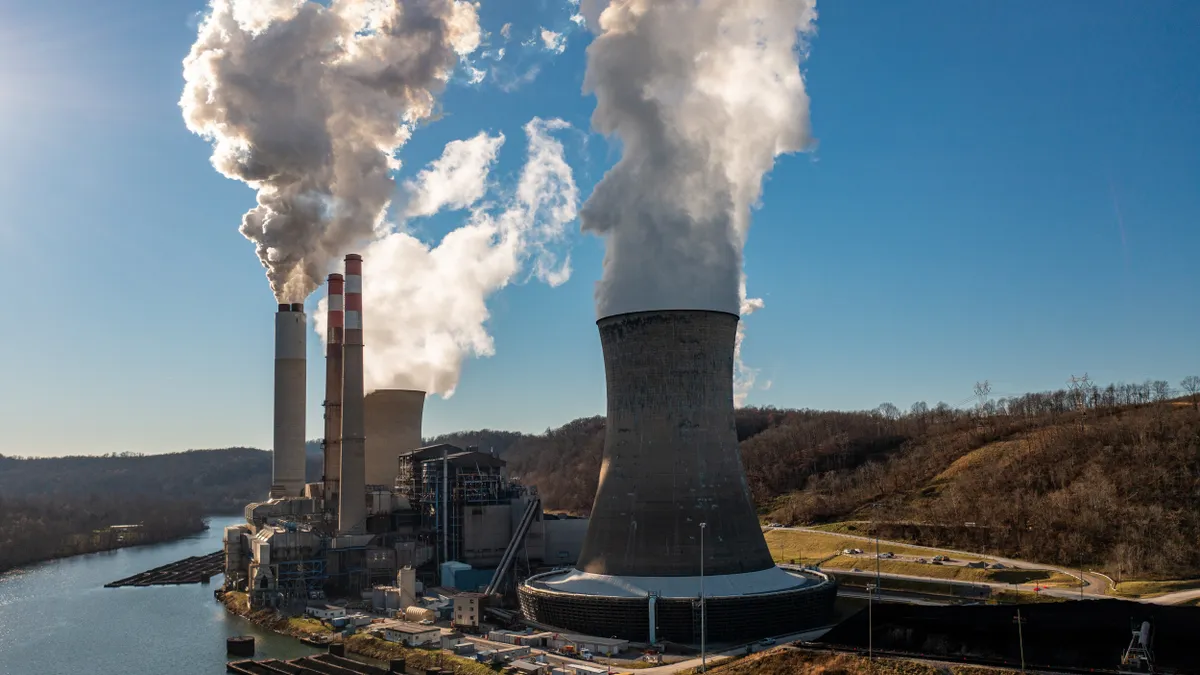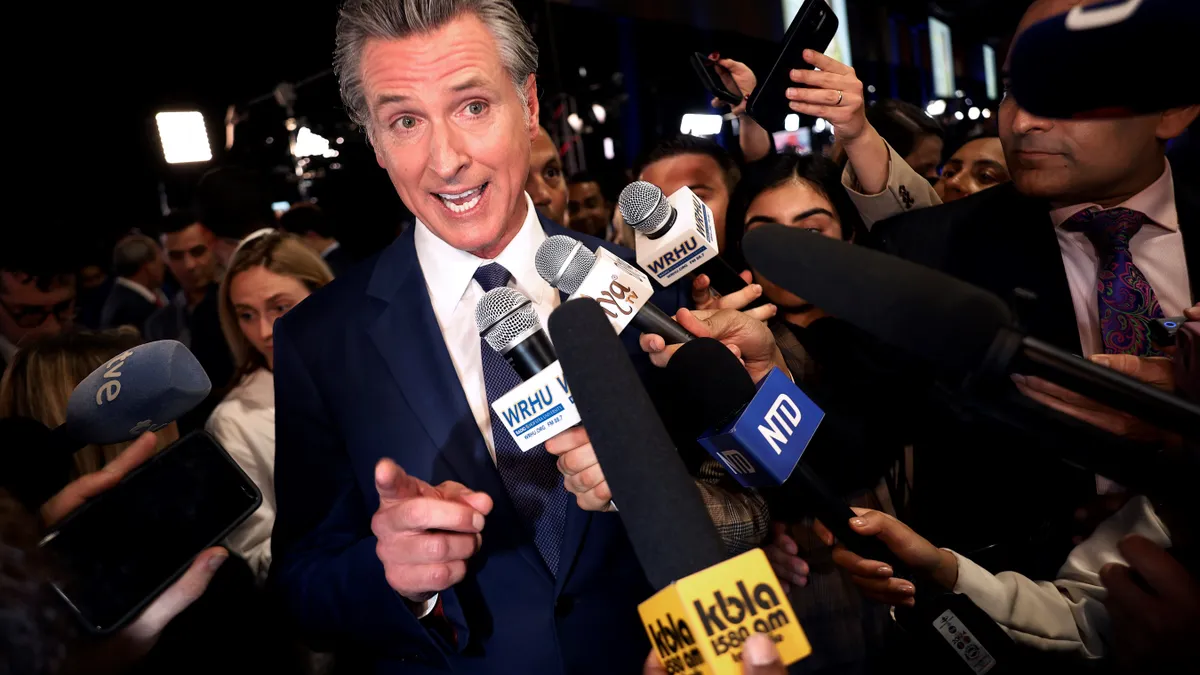When a hurricane hits Coral Gables, FL, it can lose power in up to 80% in the city, including to buildings that house public safety and its communications. But thanks to a smart city strategy that focuses on resiliency and harnessing the power of building in redundancies to its technology, Coral Gables believes it is better prepared than ever to face extreme weather.
The city, one of the first planned communities in the country, was last hit by Hurricane Irma in 2017 — and could face some costly damage from Hurricane Michael this week. However, the city makes use of data collection through internet of things (IoT) sensors, and recently unveiled a Smart City Hub to unify that data and use it to positively impact residents’ lives, especially when faced with inclement weather.
Smart Cities Dive caught up with Raimundo Rodulfo, director of the city’s information technology department, at Smart Cities Week in Washington, DC, to discuss Coral Gables’ smart city strategy, its use of data and how it prepares for the onslaught of hurricanes.
This interview has been edited for clarity and brevity.
SMART CITIES DIVE: How did your smart city initiatives get going?
RAIMUNDO RODULFO: I would say that came organically as part of our continuous effort to improve customer service and quality of life. New technologies come and they help us achieve that mission. New technologies that help us become more resilient is very important. Having a resilient, smart network and a smart energy strategy is key to continue providing those critical services for 911, for first responders, police, fire.
Basically, those critical services that we have to provide in public safety, they depend on having that smart network that is secure, that is able to have multiple layers of redundancy, fiber optics is very important, point-to-point, wireless, satellite, cellular. All those different layers are necessary in a case like surviving Hurricane Irma, for example. That's part of being a smart city: being more resilient, being more sustainable, working together as part of the sustainability master plan of the city.
On the resiliency piece, what went into that process to build for the hurricanes you have to survive?
RODULFO: Basically, it starts with engineering. You need to have a well-planned and engineered network from the beginning. You need to build resiliency as part of the design from the beginning; it cannot be an afterthought. It's the same as cybersecurity: cybersecurity is part of being resilient, resilient to cyber threats. That has to be built in the design. You have to spend good time designing your network, leveraging those standards and best practices that already exist.
In our case, we lose power a lot during hurricanes. During Irma, we lost power in more than 80% of the city, including the public safety buildings and fire stations where we host those critical services. How do we maintain critical communications in those cases? Basically, leveraging energy resiliency with backup generators and backup batteries.
Now we are working with the University of Miami as part of the Bloomberg American Cities Climate Challenge. We were awarded $100,000 to pilot a microgrid. That smart microgrid is leveraging solar power and is leveraging the research of the University of Miami, so that's a good thing about pairing with universities. We are trying to become more resilient on the energy side to maintain this network's operations, even if we lose 80% or more of power in the city, including those critical services.
You're collecting data from sensors — how do you make use of what you collect?
RODULFO: The challenge here is to break those data silos. The data silos grow quickly, so you need to control them. When we deploy IoT sensors, we try as much as possible to aggregate all the data into single platforms, so that's why we have IoT aggregation platforms where we are plugging in all those sensors. Have we been able to aggregate and integrate all that data yet? No. We still have a few silos that we are working through to create those custom platforms that will bring all this data into one place.
Now the biggest effort we have made to aggregate all the data and all the services and the digital value into one platform is the Smart City Hub. It's an open data platform. It has a lot of services including IoT data, including open data from our GIS platforms. That's where we leverage technology from [GIS mapping software firm] Esri and from Google to integrate as much as possible all these applications into a platform so we can make the data location aware but at the same time integrate applications. At the end, they all can share the same GIS information, the same data that contains the same geographic layers even if they are in different places or different locations in the network.
GIS is a way to integrate many of these applications, including IoT, but it's a challenge. It's big data, bigger data, faster-growing data, and the challenges are multiple. I would say data has to be actionable. Just keeping data for the sake of keeping data at rest is not bringing any value to the organization, if it's not actionable. That's why we focus on making data into actionable information.
"Data has to pay its rent. We cannot just keep data and grow data for the sake of growing data."

Raimundo Rodulfo
Director of Information Technology, City of Coral Gables, FL
Actionable how?
RODULFO: For data to be actionable, it needs to match need. It needs to be safe, it needs to be secure, it needs to be regulated with the proper data sharing and privacy frameworks, but at the same time it needs to serve a purpose. Data has to pay its rent. We cannot just keep data and grow data for the sake of growing data.
What we're trying to do is make the data actionable with, for example, crime analytics for the police. We collect data from CCTV and license plate readers, that data is protected and is actionable because it helps police and fire to prevent and fight crime. They use that data to better design their tactics and operations and strategies to deploy units at the right place at the right time to fight the right type of crime at different locations. Data becomes very powerful. The power of data can be harnessed by good data governance. You need to have a policy, you need to have a strategy for data governance.
Looking forward 5-10 years, as you continue your smart city strategy, what do you want it to look like? What's your vision for all this?
RODULFO: We know there is going to be a lot of sensors all over the place collecting data, we know there is going to be robotics in many instances and places. But that's not what is important. How is that going to change quality of life, how is that going to help us provide better citizen services? What I would see is that us implementing a strategy like this, it can evolve with technology and with the times as technology becomes smarter and ubiquitous, if we always keep in mind our goal of continuous improvement of customer service and quality of life. If we also focus on the values we are trying to deliver: transparency, open data, actionable information, efficiency is key for us.



















